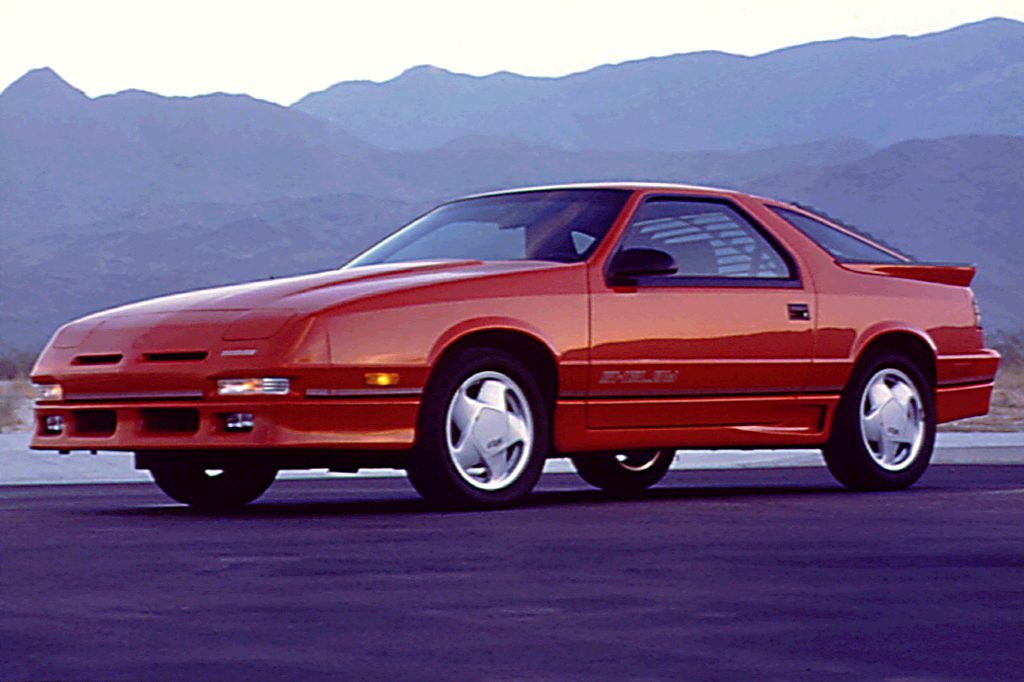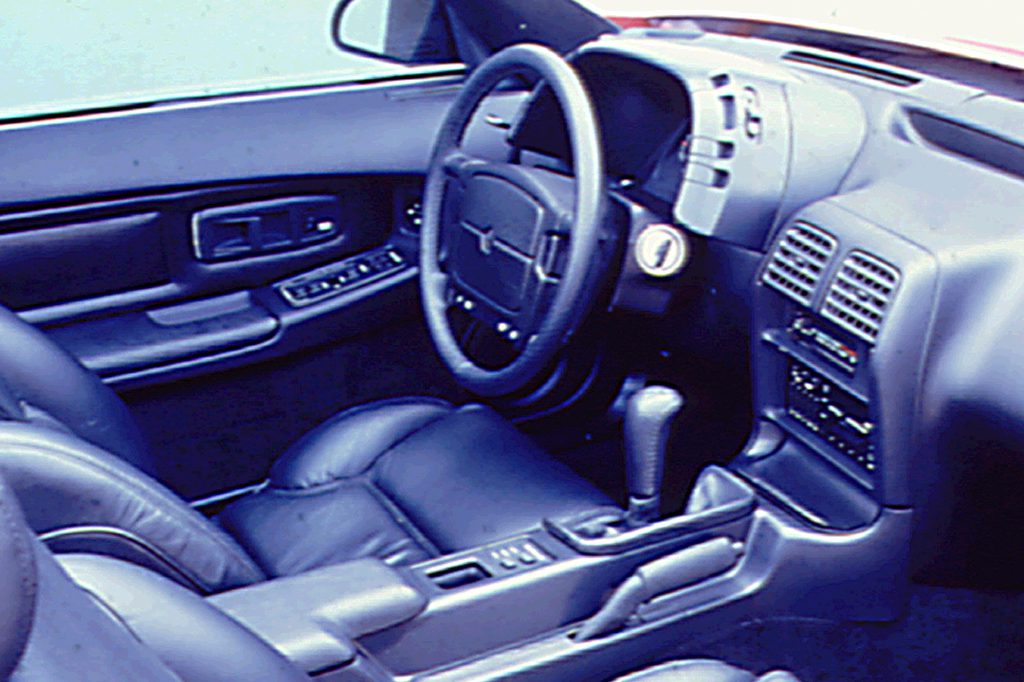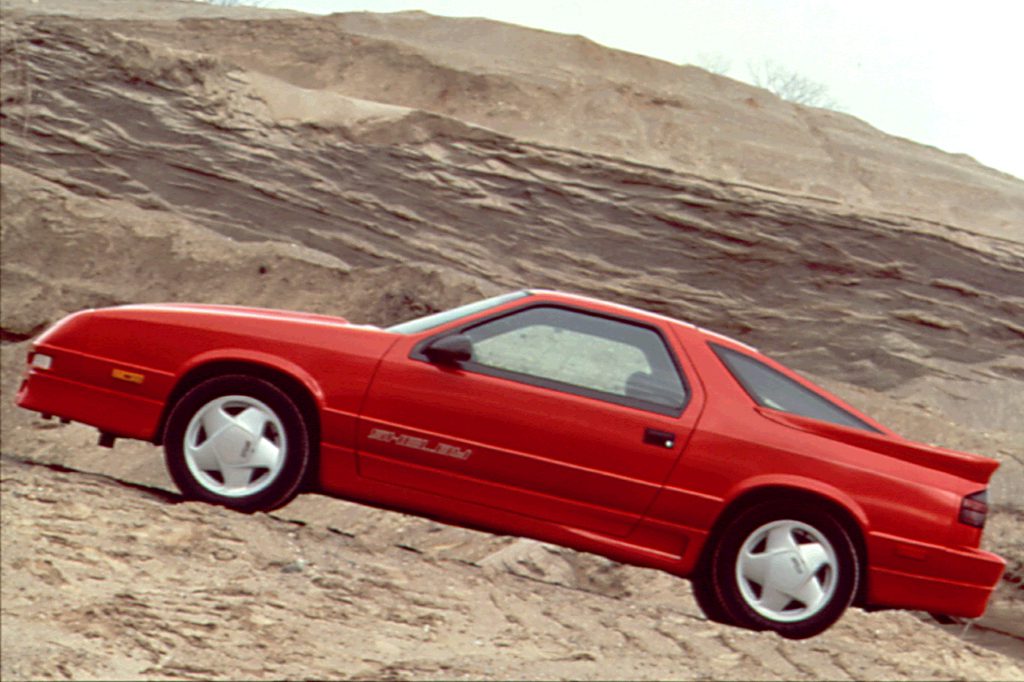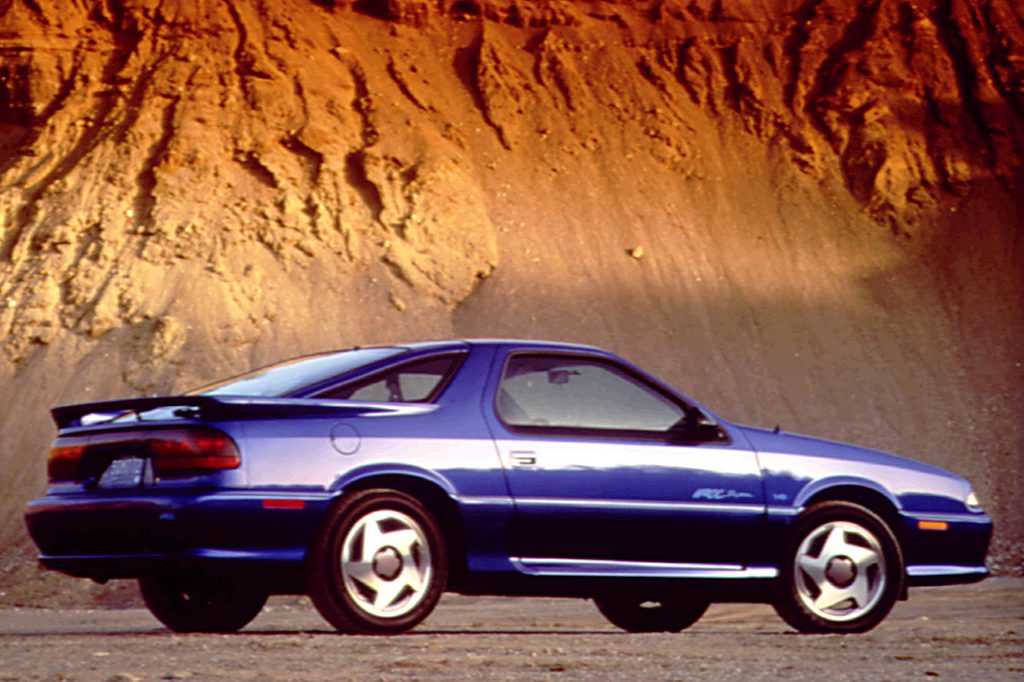| Sporty/performance car; Built in USA |
|
|
| Good condition price range: $1,000 – $1,900* |

1990 Dodge Daytona Shelby

1990 Dodge Daytona interior

1991 Dodge Daytona Shelby

1992 Dodge Daytona IROC

1993 Dodge Daytona IROC
| Pros: |
|
| Cons: |
|
Daytonas cannot match the refinement or assembly quality of import rivals. Still, you get decent performance at a reasonable price. Our favorite is the V6 IROC, which is quicker and quieter than base four.
Overview
The Daytona, introduced for 1984, targeted younger drivers. Fresh front/rear styling arrived for ’87, featuring pop-up headlamps. Four-wheel disc brakes went into ’89 models. A new interior for 1990 included a fresh dashboard and a new steering wheel that contained a driver-side airbag. A 2.5-liter 4-cylinder went into base and ES Daytonas. Two turbocharged engines were also available: a 150-horsepower 2.5-liter version for the ES Turbo (and for Shelbys with automatic), plus a 174-horsepower 2.2-liter VNT Turbo IV. Available only with stick shift, that hotter turbo was standard in the Daytona Shelby and optional with the C/S competition package. For the first time in 1990, Daytonas could be equipped with a V6 engine, broadening the coupe’s appeal. Made by Mitsubishi, the 141-horsepower 3.0-liter V6 was optional in base and ES models. This year also brought an improved 5-speed gearbox. Also for ’90, Shelbys were available with electronic variable suspension, which used switches to select firm, normal, or soft shock-absorber damping.
Yearly Updates
| 1991 Daytona The 2.5-liter turbocharged engine got a big torque boost for 1991 (from 180 to 210 pound-feet), renamed “High Torque” Turbo I. Horsepower rose by two. At the same time, the 2.2-liter turbo disappeared. Front suspensions were recalibrated to improve steering feel and straight-line stability. Later in the year, a V6 IROC went on sale. |
| 1992 Daytona Antilock braking could be installed in ’92, when Daytonas were facelifted with a fresh front end and new tail. Exposed aero headlamps replaced the hidden units and full-width taillamps were installed, along with new outer door panels and side window openings. Optional ABS included rear disc brakes. During the model year, an IROC R/T with a 224-horsepower intercooled turbocharged engine joined the V6 IROC, replacing the prior Shelby model. |
| 1993 Daytona Base models could now get antilock braking, but few other changes were evident in the Daytona’s final season. The optional 152-horsepower turbo disappeared. |
